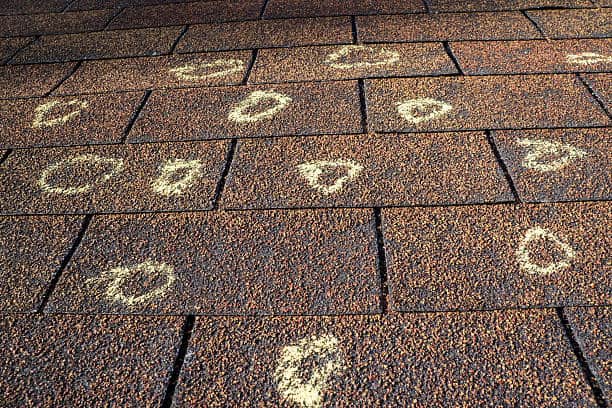
What To Do When Your Roof Gets Damaged
There are so many positives that come along with home ownership. But inevitably, there are going to be a few negatives. The Midwest is known for it’s sudden and often strong storms – and when your home is the victim, the aftermath can feel overwhelming. Whether the instigator is a spring thunderstorm or an unexpected leak, knowing how to navigate the situation can save you from unnecessary stress and financial strain. Here’s a comprehensive guide to managing the situation without stress.
Step 1: Assess the Damage Safely
First and foremost, safety should be your top priority. Avoid climbing onto the roof to inspect damage yourself; instead, take photos from the ground and call your preferred contractor. Look for visible signs of damage, such as missing shingles, dents on vents and gutters, or large debris. This initial assessment will give you a better understanding of the severity of the damage and help you articulate the problem to professionals later on.
Step 2: Mitigate Further Damage
To prevent additional damage to your home, take immediate, temporary measures. If you have an active leak, we recommend emergency tarp services to make sure that your home is dried-in. Insurance will reimburse you for these services. Remember, these are temporary fixes meant to protect your home until complete repairs can be made.

Step 3: Document Everything
Documentation is crucial for insurance claims and your own future reference. Take detailed photos and videos of the damage from multiple angles. Take notes on the date and extent of the damage, as well as any steps you’ve taken to mitigate further issues. This evidence will be invaluable when dealing with insurance companies and contractors.
Step 4: Choose a Reputable Roofing Contractor
Selecting a reliable roofing contractor is critical for ensuring quality repairs. Look for local, well-reviewed companies with experience in storm damage repair. A reputable contractor will not only provide a fair estimate but also help navigate the insurance claims process. They should conduct a thorough inspection, explain the necessary repairs, and offer a detailed quote.
Step 5: Contact Your Insurance Company
Reach out to your insurance provider as soon as possible to report the damage. They will guide you through the process of filing a claim and inform you about what your policy covers. Be prepared to provide the documentation you’ve gathered. The insurance company will likely send an adjuster to inspect the damage and determine the cost of repairs covered by your policy.
Step 6: Understand the Repair Process
Once you’ve selected a contractor and your insurance claim is approved, decide on a timeline for the repairs. Understanding the process will help you manage your expectations and prepare accordingly. Depending on the extent of the damage, repairs can range from a simple, one-visit repair job to a complete roof replacement.

Step 7: Prevent Future Damage
After repairs are completed, consider taking steps to minimize future damage. This might include regular maintenance, such as cleaning gutters and inspecting the roof for signs of wear and tear, or investing in more durable roofing materials if you live in an area prone to severe weather.
In conclusion, dealing with roof damage can be a daunting task, but with a meth.odical approach, you can navigate the situation smoothly. Remember, the key is to act promptly, document everything, work with trusted professionals, and use this experience as an opportunity to enhance your home’s resilience against future storms.
For more specific questions or concerns regarding the insurance claim process for your home’s exterior damage, don’t hesitate to contact Indy Exterior Services. Our team is here to support you through every step, ensuring your home is restored to its pre-damage condition efficiently and effectively.
